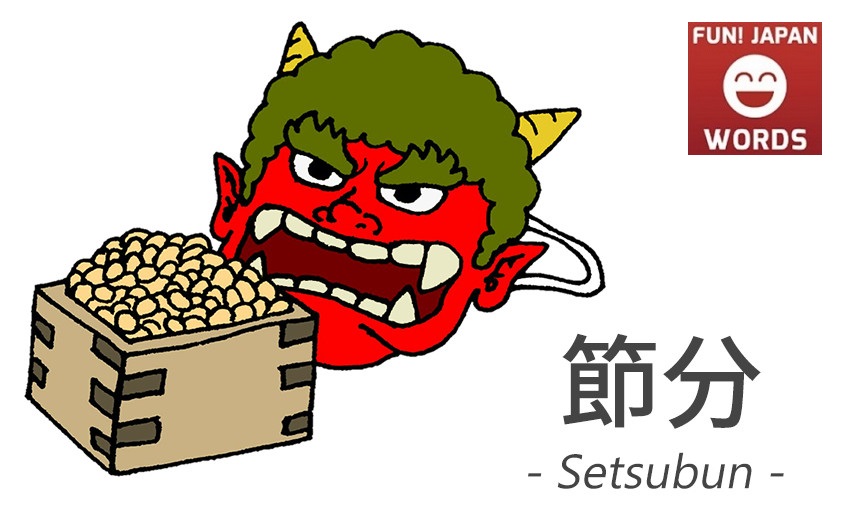
Setsubun (節分) is the Japanese holiday that is celebrated annually on February 3rd. Translated directly as “seasonal division”, it is a fitting name as it marks the last day before the beginning of spring.
The seasonal transition is thought to draw evil spirits. Thus, one of the main customs of Setsubun is a ritual called “mamemaki”. While chanting “Demons out! Luck in!” families would throw soy beans out the door or at a family member wearing a demon mask, and then shut the door. This is believed to drive away evil spirits and worries of the past year.
Festivals are held at Shinto shrines and Buddhist temples as well to celebrate Setsubun. In addition to soy beans, small envelopes with money and prizes are also thrown by priests and guests of the festivals.
In recent years, it has become popular to eat uncut sushi rolls called “ehomaki” during Setsubun, a custom that originated from Osaka. Ehomaki is a type of large sushi rolls known as “futomaki”. People often eat ehomaki while facing the lucky direction of the year, determined by the Chinese Zodiac, and making a wish.
Let’s remember the following useful sentences before going to Japan!
===============================
●Kyonen no setsubun asakusa no sensouji ni ikimashitayo.
(去年の節分浅草の浅草寺に行きました。)
> I went to the Sensouji temple located in Asakusa last year for Setsubun.
●Uchi no kodomotachi wa setsubun wo tanoshimi ni shiteimasu.
(うちの子供たちは節分を楽しみにしています。)
> My children are looking forward to Setsubun.
===============================
Now all that’s left is to go out there and try using them in Japan!
■■■ Back Number Articles ■■■
Check All Fun! Japan WORDS
Previous Word
Omotenashi (おもてなし) Fun! Japan Words vol.129
Comments